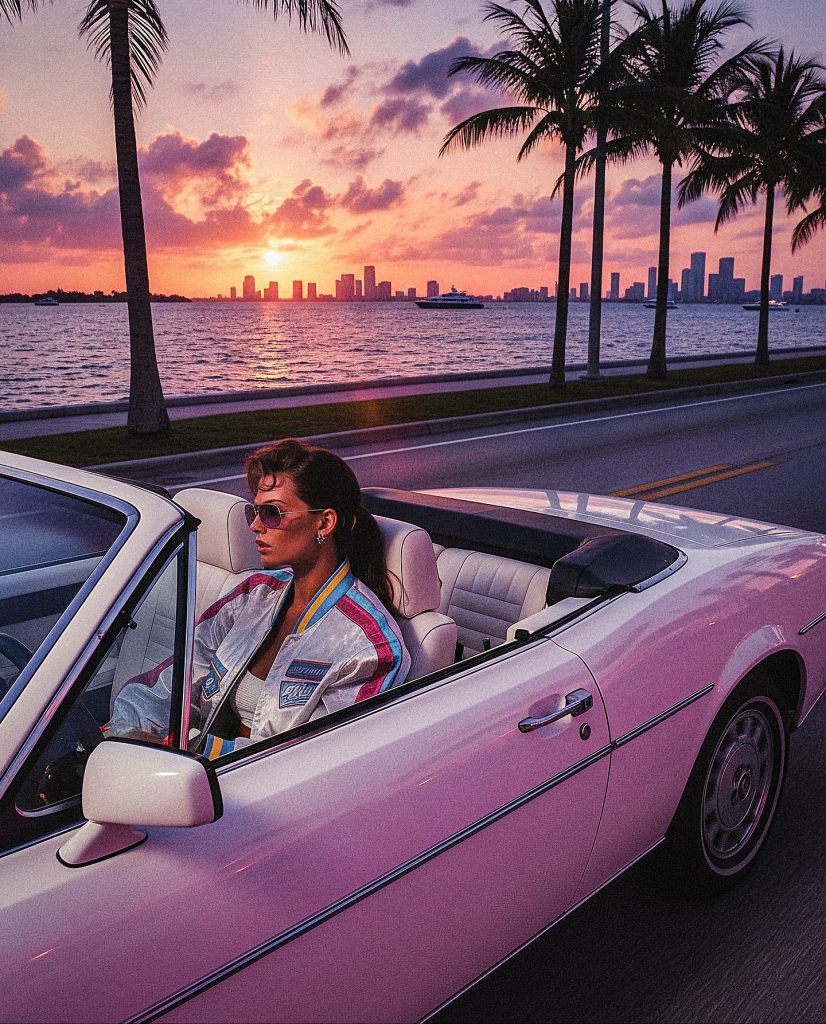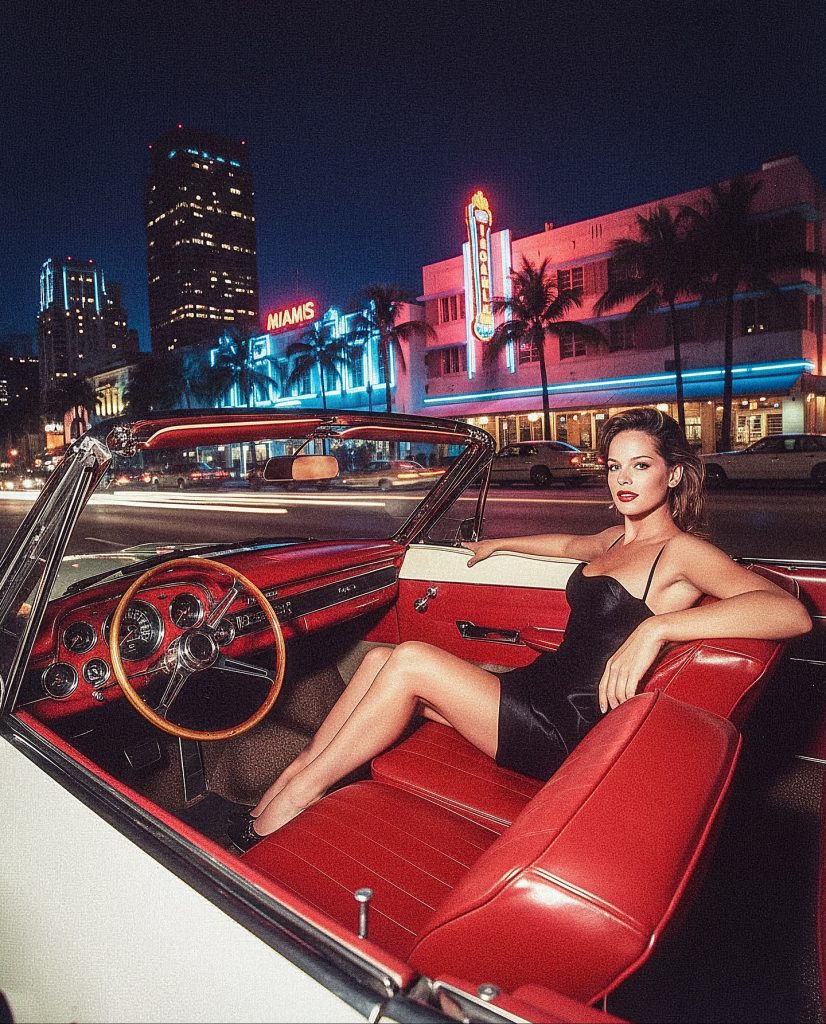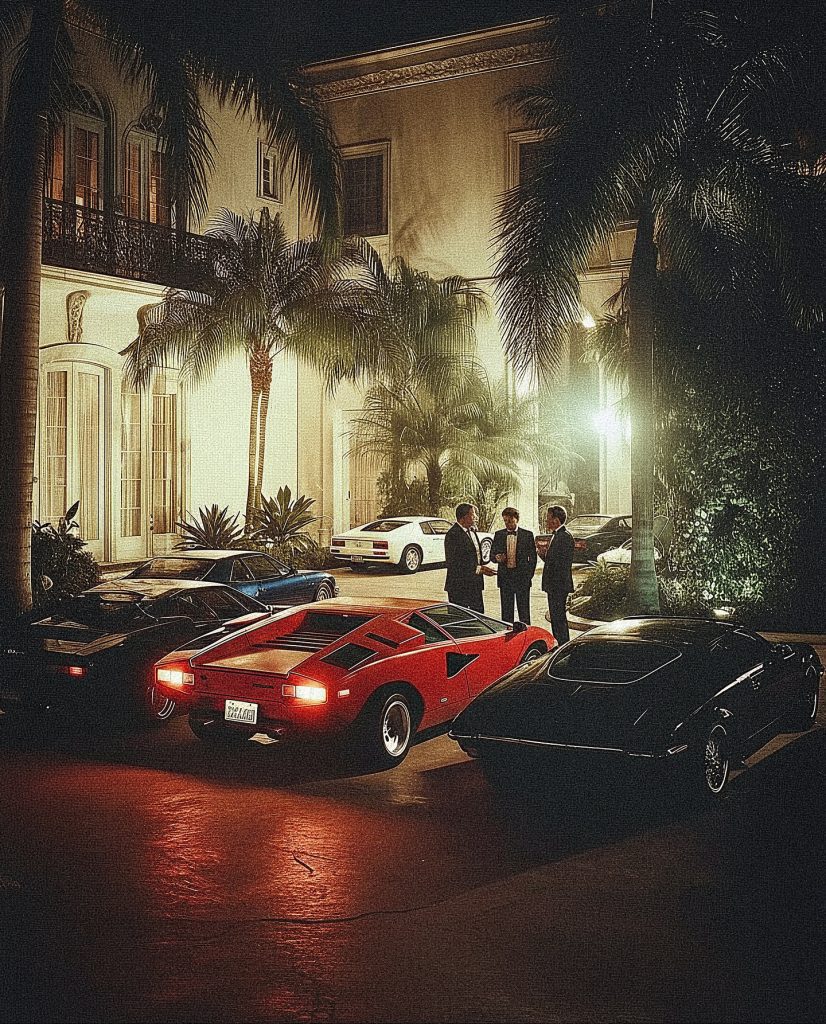Inside 1980s Miami — The Decade When Neon Lights, Fast Cars, and Ocean Drive Made the City a Global Symbol of Luxury
There was a time when Miami didn’t just shimmer under the sun — it glowed. The 1980s were more than just a decade for the city; they were a transformation, a complete reinvention that took Miami from a sleepy beach town into one of the most electrifying symbols of wealth, nightlife, and cinematic cool in the world.

Back then, Miami wasn’t just alive — it pulsed. Ocean Drive was the center of everything, lined with pastel-colored Art Deco hotels that looked like film sets under the pink and turquoise glow of neon lights. Classic convertibles cruised past, music spilled out of beachfront bars, and palm trees swayed above scenes that felt almost too glamorous to be real. The city had become a living postcard for the good life — fast, flashy, and unapologetically bold.

The look that defined Miami’s golden glow started earlier than most people realize. In 1979, the Art Deco Historic District officially made it onto the National Register of Historic Places. That move preserved around 800 of the area’s most iconic pastel buildings, ensuring the city would keep its signature look — geometric shapes, curved lines, and endless shades of mint green, peach, and coral. This gave Miami a timeless face just as the 1980s brought in the era of global luxury and media glamor.

By the middle of the decade, Miami wasn’t just a destination — it was a fantasy. Ocean Drive was packed with tourists, models, and moguls who wanted to live a version of the life they saw on TV. Hotels like the Carlyle, the Colony, and the Avalon were backdrops to unforgettable nights. By 1988, Miami-Dade was pulling in over 7.2 million overnight visitors every year, all chasing a taste of that coastal glamour that no other city seemed to have.

Pop culture, of course, played a massive role. Miami Vice, the hit TV series that premiered in 1984, changed everything. It didn’t just put Miami on the map — it sold Miami to the world. The show’s pastel suits, Ferraris, and waterfront mansions created an image of the city that foreign audiences couldn’t get enough of. Germans, in particular, were hooked — by 1988, visits from Germany alone had skyrocketed by nearly 150%. The show’s cool, cinematic take on Miami’s nightlife turned the entire city into a fantasy of speed, music, and endless summer.

Even today, that 1980s energy is still alive. The legacy of that decade’s glamour can be seen in everything from luxury condos with Art Deco-inspired design to vintage cars lined up along South Beach for nostalgic photoshoots. Miami never let go of its reputation — it just evolved it. In 2024, Greater Miami attracted more than 28 million visitors, and the vibe that started with neon lights and late-night parties still powers the city’s modern image as a luxury playground.

What makes the 1980s so memorable for Miami isn’t just the style — it’s the spirit. It was an era of risk and reinvention, of turning sun and sea into a global brand. The people who lived through it remember the glow of headlights on Collins Avenue, the rhythm of synth beats echoing from convertible radios, and the feeling that in Miami, the night was always young.
The 1980s made Miami more than a city — it made it a lifestyle. And all these years later, that neon-lit dream still hasn’t faded.

